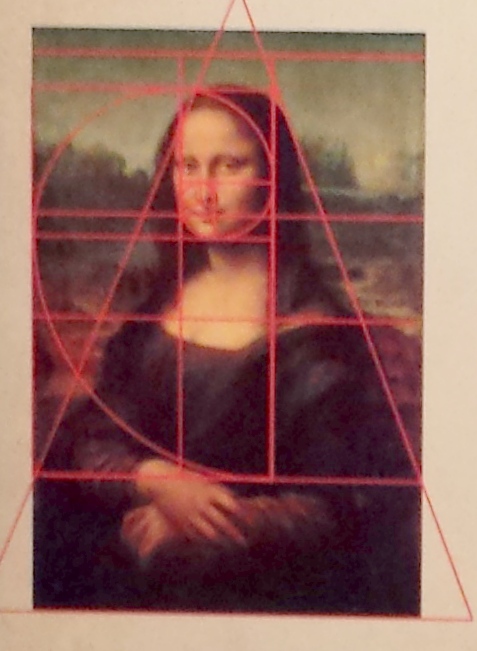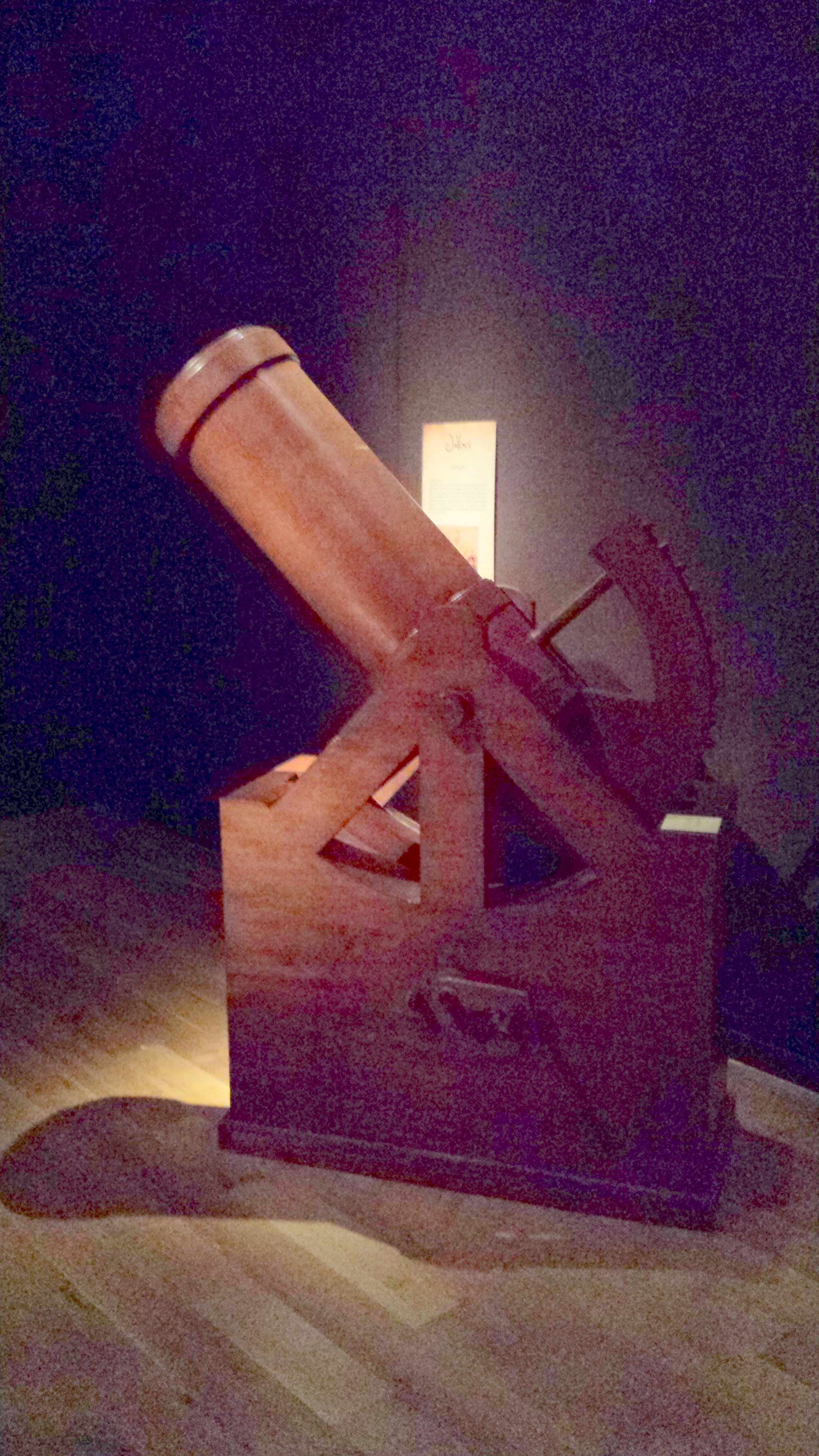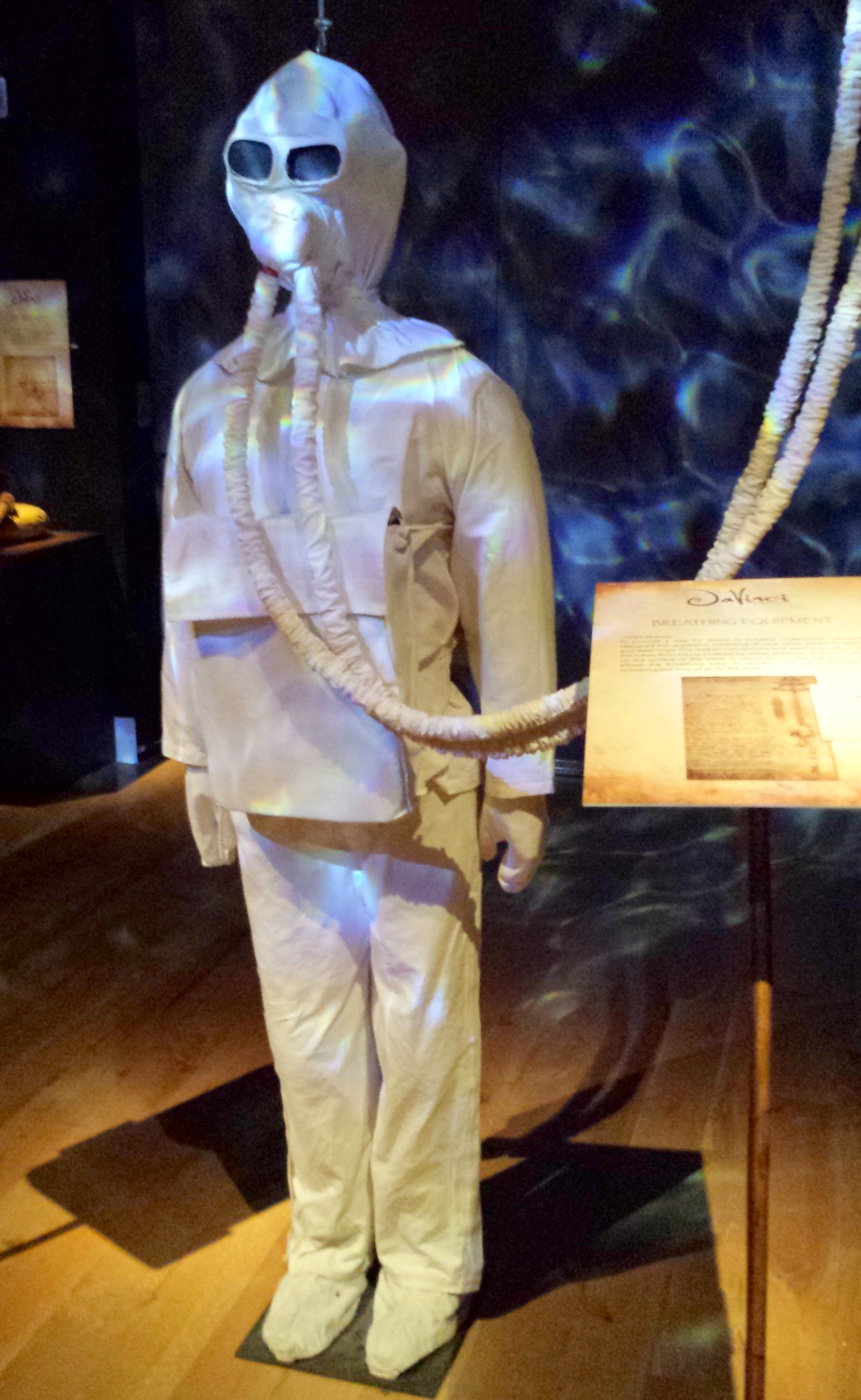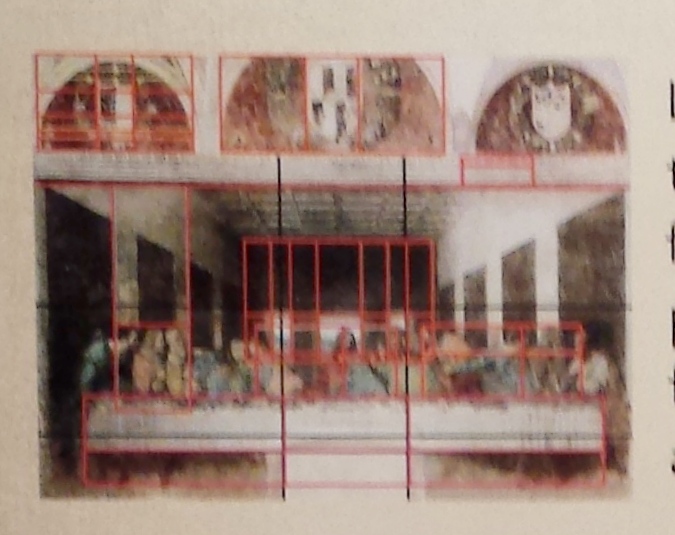
I’ve always wanted to be a renaissance woman—to be like the educated class of the Renaissance, free to pursue a variety of interests, not as a dabbler, but as an expert in each area I explored. The only drawback I could see to such a life was the lack of indoor plumbing. (Well, antibiotics and painkillers are also useful additions to modern life.)
Leonardo da Vinci was the quintessential Renaissance Man. In the past few weeks, I’ve had the opportunity to visit two museum exhibits on da Vinci’s work—one in San Diego, and the other back home in Kansas City. I knew, of course, that da Vinci had been interested in many areas—art, anatomy, and flight to name a few. But I hadn’t known the extent of his study of military equipment, architecture, and urban planning.

Born in the mid-1400s, the illegitimate son of a wealthy notary and a peasant woman, da Vinci began his career as apprentice to a famous painter and sculptor. But he became a self-taught man in many fields. He developed the ball bearing into what we know it as today. He planned the “perfect city,” laid out with canals for sanitation to reduce the risk of illness and wide streets to improve transportation and military control. He designed forklifts, cranes, and drills. He studied hydraulics and ways to channel rivers to reduce flooding and harness the power of water to run machines. He devised buoys, double-hulled boats, hydraulic saws, and diving suits.

In the military arena, da Vinci designed catapults, tanks, portable bridges, and cannons. A practical man, da Vinci sold some of these military inventions to finance his art work.
Although dissection of the human body was illegal in his day, da Vinci learned human anatomy through sketches made of dissected limbs and organs. He studied the human body throughout the aging process. His research was both visual and scientific, showing his ability to work in both his left brain and right brain (as we would say today). His careful analysis of the human form contributed both to the realism of the characters he drew and also to the compelling composition of the scenes and the stories his paintings told.
Both the San Diego and the Kansas City exhibits appear to stem from the same source—a group in Florence, Italy, that has worked for many years to construct models of the drawings in da Vinci’s notebooks. Some of these models were duplicated in the San Diego and Kansas City exhibits. But each museum focused on different aspects of the Renaissance Man’s work.
The exhibit I saw at the San Diego Air and Space Museum was called Da Vinci: The Ultimate Innovator and it emphasized da Vinci’s work in the areas of transportation, military, and mechanical—all natural fits for the focus of this museum on air and space. Models of da Vinci’s inventions depicted in this display included a bicycle, a hang glider, and a helicopter. Each model was shown along with da Vinci’s drawing.
The da Vinci exhibit at Union Station in Kansas City, called simply Da Vinci: The Exhibition, was broader and made use of the wonderful exhibit space at this beautiful old train station. (If you go, take time to stare at the ceiling above the main hall.) Many of the machines displayed were similar (if not the same) as what I’d seen in San Diego. But this exhibit also included an underwater suit and images of what da Vinci thought a modern city should look like.

In addition to the focus on da Vinci as an innovator, both exhibits also displayed replicas of his most famous paintings, such as the Mona Lisa and The Last Supper. We know da Vinci best today because his art has endured through the ages, but his art has been successful because of the breadth of his knowledge in so many scientific fields.
The Kansas City da Vinci exhibit ended with a quote from General Louis H. Wilson, Jr., “True genius lies not in doing extraordinary things, but in doing ordinary things extraordinarily well.” But in my opinion, da Vinci did extraordinary things extraordinarily well. There was nothing ordinary about this Renaissance Man.
I came away from these exhibits even more impressed by da Vinci than I had been. His conceptual powers let him imagine things far beyond the limits of his age. He envisioned inventions that man would not realize for centuries after his death. And his artistic talent created works that have awed viewers through those same centuries.
I can never hope to be a renaissance woman, nor are my talents anywhere near the caliber that da Vinci had in any field. But I am grateful for the freedom I have had to explore my own more modest variety of interests—from law to business to writing to music. And I’m grateful for indoor plumbing.
If you have a chance, go see a da Vinci exhibit for yourself. The San Diego display is open through January 3, 2017, so Californians and visitors to San Diego have many months yet to see it. But the Kansas City exhibit is only open a few more days—it closes May 1, 2016, so get there soon!
What earlier era of history appeals to you?




I have previously wished that the images used in your blog could be expanded and viewed in a different window. I particularly would have liked to be able to do that on your da Vinci blog. I’d be happy to send instructions how to, or if you’ve consciously chosen not to, that’s OK too.